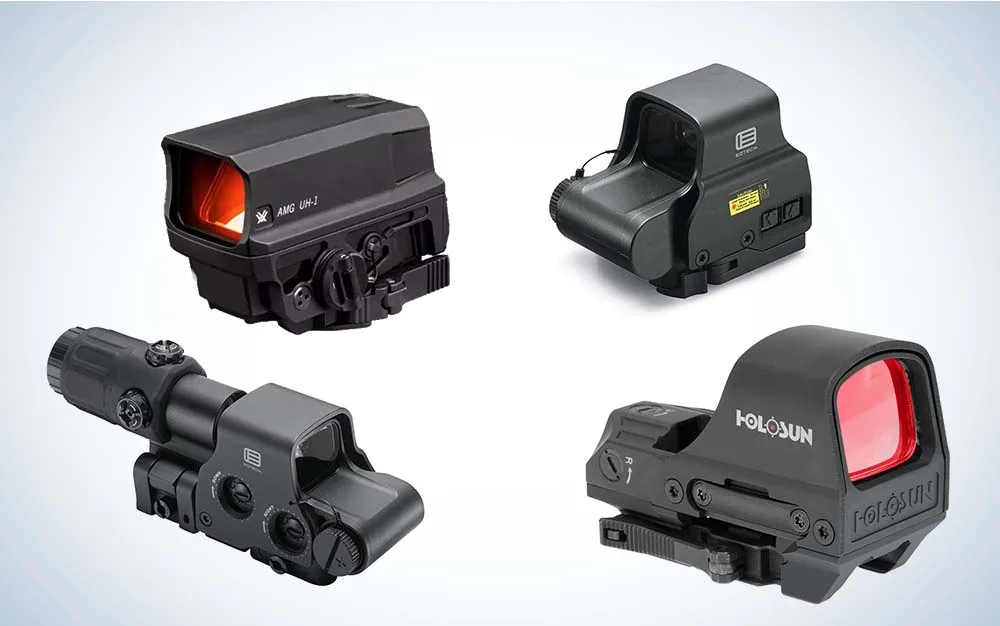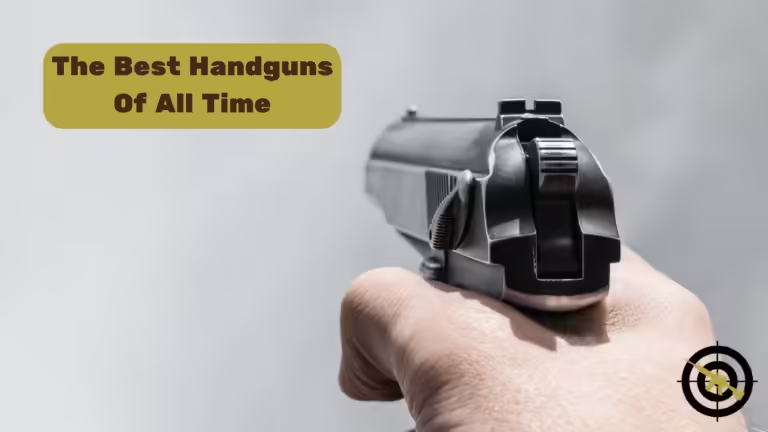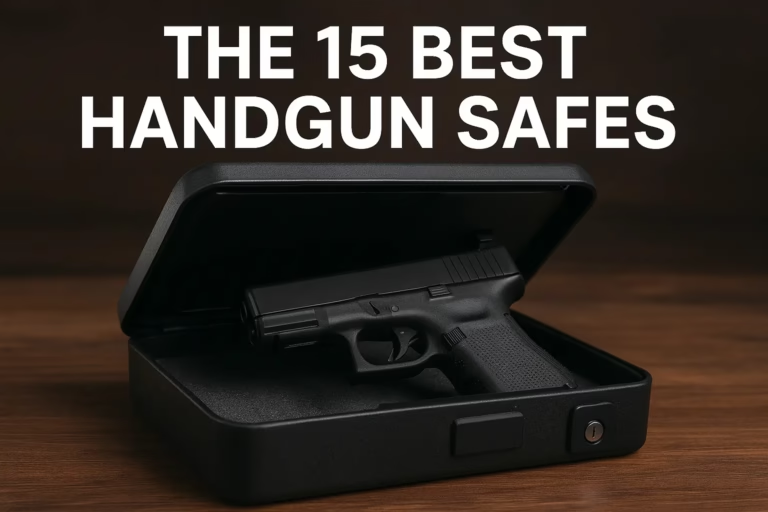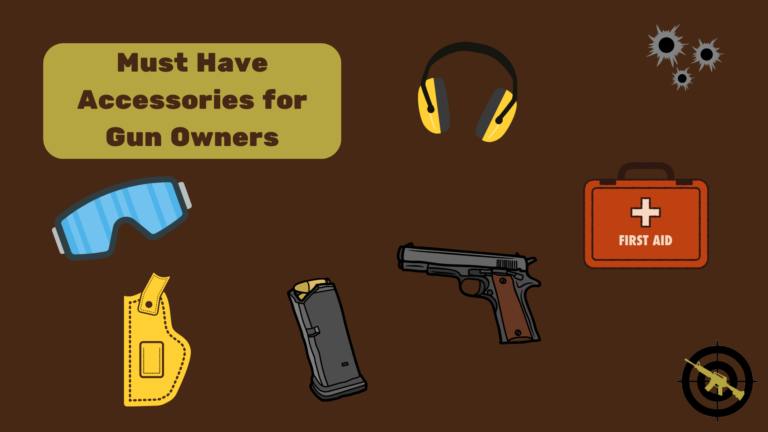Tired of your red dot looking like a blurry starburst? Frustrated with slow target acquisition when seconds count? You’ve invested in a quality firearm, but if your optic isn’t up to the task, you’re leaving performance on the table. Finding the right sight can feel overwhelming, especially with so much conflicting information out there.
This is where holographic weapon sights, or holo sights, change the game. They offer a fundamentally different technology that provides unparalleled speed, a crystal-clear reticle, and a massive advantage for shooters with astigmatism. Forget the blur and embrace precision.
In this comprehensive guide, we’ll break down everything you need to know to find the best holo sights for your setup. We’ll explore how they work, compare them to traditional red dots, review the top models on the market, and give you the key criteria to make an informed decision. Let’s get you on target, faster.
What is a Holographic Sight and How Does It Work?
Before we dive into the top models, it’s crucial to understand what makes a holographic sight unique. Unlike a red dot sight, which uses an LED to reflect a dot off a coated lens, a holographic sight uses a more complex and advanced system.
So, how does it work? Here’s a simple breakdown:
- A laser diode illuminates a holographic grating, which contains the recorded image of the reticle.
- This laser-illuminated image is then projected onto your viewing window.
- The key difference is that the reticle image appears to be floating downrange on your target, not on the sight’s glass.
This technology is what makes true holographic sights parallax-free. It means that even if your eye isn’t perfectly centered behind the optic, the reticle remains on the target. This results in incredibly fast and forgiving target acquisition, a massive benefit in dynamic shooting scenarios.
A Note on “True” Holographic Sights
It’s important to clarify a common point of confusion. Currently, EOTECH and Vortex (with their Razor AMG UH-1) are the primary manufacturers of true holographic weapon sights. Some other brands may use reticles that look similar (like a circle-dot), but they are typically LED-based reflex sights, not true laser-based holographic systems. For the purposes of this guide, we are focusing on the genuine article.
Holographic Sights vs. Red Dot Sights: What’s the Real Difference?
The “holo sight vs. red dot” debate is one of the most common in the optics world. While both are excellent for close-to-medium range engagement, they achieve their goal differently. Understanding these differences is key to choosing the right optic for you.
Here’s a head-to-head comparison of the core attributes:
- Reticle Clarity & Astigmatism: This is the biggest win for holo sights. Because the reticle is a hologram, it appears crisp and precise, even to shooters with astigmatism who often see a smeared or starburst shape with red dots. This makes it one of the best holographic sight astigmatism solutions available.
- Target Acquisition Speed: Both are fast, but the holographic sight’s “both eyes open” shooting experience and large viewing window often give it an edge in Close Quarters Battle (CQB). The typical EOTECH 68 MOA ring naturally brackets a human-sized target at close range, making it exceptionally quick.
- Parallax: True holographic sights are virtually parallax-free. Red dots have extremely minimal parallax, but a holographic sight’s projected reticle takes this to another level, offering more forgiveness in awkward shooting positions.
- Battery Life: This is the clear winner for red dot sights. Because holo sights use a laser, they are more power-intensive. A red dot can last for 50,000+ hours, while a holographic sight typically lasts for 600-2,000 hours.
- Durability: High-end models in both categories are built like tanks. However, a unique advantage of holo sights is that they can continue to function and show a usable reticle even if the front lens is partially shattered or obstructed by mud.
- Cost: Generally, holographic sights come with a higher price tag due to their more complex technology. However, the performance benefits often justify the investment for serious shooters. You can explore more in our detailed guide on Red Dot vs Holo Sight Deep Dive.
The Best Holo Sights on the Market in 2025 (Reviewed)
After extensive testing and market research, we’ve identified the top-tier holographic sights that deliver on performance, durability, and value. These models consistently rank as the top rated holographic sights by military, law enforcement, and civilian shooters.
1. EOTECH EXPS3: The Gold Standard
When you think of a holographic sight, the EOTECH EXPS3 is likely the first model that comes to mind. It’s the preferred choice for special operations forces worldwide for a reason. It is, without a doubt, a top contender for the best holographic sight for AR-15 and ak 47 platforms and other modern sporting rifles.
The EXPS3 series features a compact design, a quick-detach (QD) lever for easy mounting, and side-mounted buttons that don’t interfere with magnifiers. Its standout feature is its night vision compatibility, with dedicated settings that make it a perfect partner for NV devices.
Key Features:
- Night vision compatible
- Quick-detach mounting system
- Compact footprint saves rail space
- 7mm raised base for lower 1/3 co-witness
- Exceptional durability and water resistance
- Powered by a single CR123 battery
While it carries a premium price, the EXPS3’s battle-proven reliability and feature set make it the pinnacle of holographic weapon sight technology. Learn more on the EOTECH EXPS3 Product Page.
2. Vortex Razor AMG UH-1 Gen II: The Rugged Contender
Vortex entered the holographic sight market with a bang, and the Razor AMG UH-1 “Huey” Gen II is a phenomenal optic that gives EOTECH a serious run for its money. It addressed feedback from the first generation, offering a sleeker design, larger viewing window, and dedicated night vision settings.
The UH-1 Gen II is known for its incredible durability, featuring Vortex’s FHQ (Fusion-Hologram with Quantum well) technology that eliminates stray light emissions for stealthy operation. Its EBR-CQB reticle is fast, intuitive, and highly effective for rapid engagement.
Key Features:
- Four night-vision compatible settings
- Large, unobstructed field of view
- Integrated quick-detach mount
- ArmorTek coating protects lenses from scratches and oil
- Argon-purged for fog-proof performance
For those looking for a top-tier alternative to EOTECH with a slightly different feel and reticle design, the Vortex Huey is an outstanding choice. It’s a true competitor in the discussion of the best holo sights available today.
3. EOTECH 512: The Affordable & Reliable Workhorse
The EOTECH 512 is the model that started it all. It’s the most popular holographic sight ever made and remains an excellent choice for those who want genuine holographic performance without the premium price of the EXPS series. It’s often called the best “budget” true holo sight.
What makes the 512 so appealing is its use of two common AA batteries. This makes logistics simple, as AA batteries are available anywhere in the world. While it’s longer than the EXPS models and lacks night vision compatibility, its performance and reliability are unquestionable.
Key Features:
- Powered by ubiquitous AA batteries (Lithium or Alkaline)
- Extremely durable and battle-tested design
- The most affordable true holographic sight from EOTECH
- Simple two-button, rear-facing interface
If you don’t need night vision capabilities and want a full-size, incredibly tough optic that runs on common batteries, the EOTECH 512 is an unbeatable value.
How to Choose the Best Holographic Sight for Your Needs
Selecting the right model from our list depends entirely on your specific application, budget, and firearm. Consider these key factors before making your final decision.
Reticle Options
The most common holographic reticle is the 68 MOA ring with a 1 MOA center dot. This is incredibly versatile. The large ring is used for fast acquisition in CQB, while the precise center dot is used for more accurate shots at distance. Some models offer multi-dot reticles for bullet drop compensation.
Night Vision Compatibility
If you plan to shoot with a night vision device, this is a non-negotiable feature. NV-compatible sights have dedicated, much dimmer settings that are visible through an NVD but not with the naked eye. Models like the EOTECH EXPS3 and Vortex UH-1 Gen II are built for this purpose.
Footprint and Mounting
How much rail space do you have? Compact models like the EXPS series are ideal for shorter platforms or if you plan to run a magnifier and backup iron sights. Also, consider the mount. A built-in QD lever adds cost but offers immense convenience for quickly attaching or removing the optic.
Battery Type and Life
Think about your logistics. CR123 batteries (used in the EXPS3 and UH-1) are common in tactical gear but not at every corner store. AA batteries (used in the 512) are everywhere. While holo sight battery life is shorter than red dots, using lithium batteries can extend it to over 1,000+ continuous hours, which is still a very long time.
Conclusion: Your Path to Faster, Clearer Sighting
Choosing one of the best holo sights is a significant upgrade for any modern firearm. The speed, two-eyes-open situational awareness, and crystal-clear reticle especially for those with astigmatism, provide a tangible advantage in any shooting discipline, from competitive matches to home defense.
For the ultimate in professional-grade, battle-proven performance, the EOTECH EXPS3 remains the undisputed king. For a rugged, feature-rich alternative with a fantastic reticle, the Vortex Razor AMG UH-1 Gen II is an exceptional choice. And for those seeking genuine holographic technology on a budget, the venerable EOTECH 512 is a workhorse that will never let you down.
Ultimately, the best optic is the one that fits your firearm, your budget, and your mission. Analyze your needs using the criteria above, and you’ll be well on your way to making a confident purchase.






